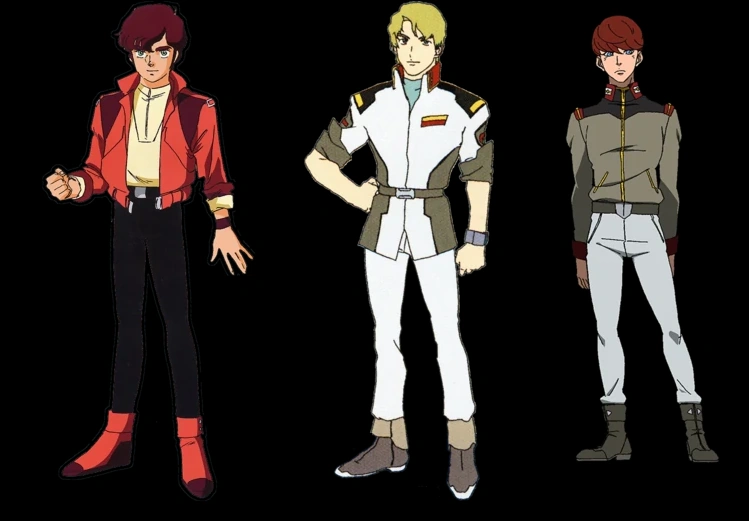The Mobile Suit Gundam universe has posed a profound philosophical question since its inception in 1979: Can humanity's evolution lead us to a state of greater understanding and empathy, or are we doomed to repeat our mistakes regardless of our potential? At the heart of this question are the Newtypes, who represent the next step in our evolution. But can they truly save us?

The Newtype Ideal: Beyond War
One of the fundamental aspects of the Newtype concept is the possibility of absolute mutual understanding. In a world where misunderstandings and lack of empathy generate conflict, Newtypes represent the ability to sense the thoughts and emotions of others without intermediaries. Theoretically, this could eliminate the need for war, as differences could be resolved through genuine communication.
In Mobile Suit Gundam, Lalah Sune describes the connection between Newtypes as a way of "understanding without words." However, this ideal rarely materializes in the series. Despite their potential, Newtypes continue to be used as weapons by the various factions in conflict, reflecting the cyclical nature of war and humanity’s inability to accept change.
Moreover, communication between Newtypes is not without problems. While they can understand each other on a deeper level, this does not mean they always agree. The clashes between Amuro Ray and Char Aznable, both considered Newtypes, are an example of how even those with a heightened sense of perception can remain trapped in their personal and ideological conflicts.
The Instrumentalization of Newtypes
Instead of being agents of peace, Newtypes often end up being exploited by political and military powers. In the Principality of Zeon, Dr. Flanagan founded the Flanagan Institute, a laboratory dedicated to studying and training Newtypes for combat use. Advanced mobile suits such as the Elmeth, Qubeley, and Psyco Gundam were specifically designed to harness their psychic abilities.
This pattern of exploitation repeats itself in almost every iteration of the Universal Century. From Cyber-Newtypes—humans forcibly altered to awaken psychic abilities—to talented pilots turned into mere pawns of war, humanity continues to view Newtypes as tools of destruction rather than messengers of peace.
For example, in Mobile Suit Gundam ZZ, Elpeo Ple and her clones are used by Neo Zeon as living weapons. Instead of developing their potential in a peaceful environment, they are manipulated and turned into soldiers with no true sense of identity. Similarly, in Gundam Unicorn, Marida Cruz, a Cyber-Newtype, is treated as nothing more than a resource until she finds the possibility of redemption through Banagher Links.
This raises a fundamental question: If humanity cannot accept change, what is the point of evolution? If the potential of Newtypes is limited to enhancing destruction, then their existence merely perpetuates conflict rather than resolving it.
The Tragedy of Newtypes
Throughout the Gundam franchise, many Newtypes meet tragic fates. Lalah Sune, for example, dies at the hands of Amuro Ray, who mourns her death and continues to sense her presence beyond the grave. Kamille Bidan, after suffering immense trauma in Zeta Gundam, loses his sanity by the end of the series—a symbolic representation of how the world is not ready for Newtypes.
This pattern is also evident in Gundam Unicorn, where Banagher Links tries to embrace the Newtype ideal while facing the reality of a world that refuses to change. His struggle symbolizes the eternal tension between humanity’s potential and its inability to embrace a better future.
Even in Victory Gundam, Newtypes continue to be hunted and massacred, with characters like Katejina Loos completely losing their humanity despite their potential. This recurring fate suggests that society simply isn’t ready to accept Newtypes as anything more than weapons or threats.
Are Newtypes Salvation or a Mirage?
Despite their potential, the Gundam storyline suggests that Newtypes alone cannot save humanity. Their existence represents a possibility—an indication that we could evolve into a more empathetic and peaceful society. However, without structural change and a collective willingness to abandon war and conflict, even Newtypes will remain victims of the system.
In Char’s Counterattack, Char Aznable believes that humanity needs to be forced to change, while Amuro Ray holds on to the hope that change can happen naturally. This debate encapsulates the central question: Is evolution enough, or do we need a radical catalyst to truly transform?
Some iterations of Gundam, such as Turn A Gundam, suggest that humanity may eventually learn from its mistakes. However, even in this version, change takes thousands of years and requires a great catastrophe before peace is achieved. This reinforces the idea that evolution is not a magical solution, but a long and painful process.
The concept of Newtypes in Mobile Suit Gundam is both a hopeful vision of the future and a warning about our inability to change. They represent the possibility of a world where communication and understanding surpass war and destruction. However, the fact that they are constantly used as weapons reflects the tragic reality that change is not automatic.
Ultimately, Newtypes cannot save humanity on their own. Their existence challenges us to ask whether we are ready for a world where empathy and understanding are the norm. If humanity can overcome its own limitations and accept change, then Newtypes could be the key to a better future. Otherwise, they will remain a reminder of what could have been—but never was.


